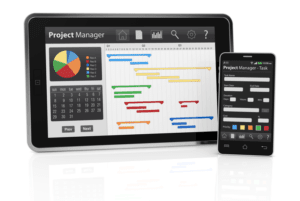
The more consistency there is between the total overhead and the allocation base, the more accurate the estimate of predetermined overhead will be. The concept of predetermined overhead rate is very important because it is used most of the enterprises as it enables them to estimate the approximate total cost of each job. Larger organizations employ different allocation bases for determining the predetermined overhead rate in each production department.
- Now management can estimate how much overhead will be required for upcoming work or even competitive bids.
- Establishing the overhead allocation rate first requires management to identify which expenses they consider manufacturing overhead and then to estimate the manufacturing overhead for the next year.
- We can calculate predetermined overhead for material using units to be allocated.
- Larger organizations may employ a different predetermined overhead rate in each production department, which tends to improve the accuracy of overhead application by employing a higher level of precision.
- The predetermined overhead rate is based on the anticipated amount of overhead and the anticipated quantum or value of the base.
- Company B wants a predetermined rate for a new product that it will be launching soon.
4: Compute a Predetermined Overhead Rate and Apply Overhead to Production
A pre-determined overhead rate is the rate used to apply manufacturing overhead to work-in-process inventory. The first step is to estimate the amount of the activity base that will be required to support operations in the upcoming period. The second step is to estimate the total manufacturing cost at that level of activity. The third step is to compute the predetermined overhead rate by dividing the estimated total manufacturing overhead costs by the estimated total amount of cost driver or activity base.

Our mission is to improve educational access and learning for everyone.
In recent years increased automation in manufacturing operations has resulted in a trend towards machine hours as the activity base in the calculation. Let’s assume a company has overhead expenses that total $20 million for the period. For example, the recipe for shea butter has easily identifiable quantities of shea nuts and other ingredients.
How to Calculate a Predetermined Overhead Rate
Once a company has determined the overhead, it must establish how to allocate the cost. This allocation can come in the form of the traditional overhead allocation method or activity-based costing.. On your current project (coded as J-17), your division has spent $2,600 on direct materials; therefore, the predetermined overhead for this project will be $4,550 ($2,600 times 175%).

The total manufacturing overhead cost will be variable overhead, and fixed overhead, which is the sum of 145,000 + 420,000 equals 565,000 total manufacturing overhead. Company B wants a predetermined rate for a new product that it will be launching soon. Companies need to make certain the sales price is higher than the prime costs and the overhead costs. In some industries, the company has no control over the costs it must pay, like tire disposal fees.

Therefore, the predetermined overhead rate of GHJ Ltd for next year is expected to be $5,000 per machine hour. This is related to an activity rate which is a similar calculation used in Activity-based costing. A pre-determined overhead rate is normally the term when using a single, plant-wide base to calculate and apply overhead. Overhead is then applied by multiplying the pre-determined overhead rate by the actual driver units. Any difference between applied overhead and the amount of overhead actually incurred is called over- or under-applied overhead.

It is often difficult to assess precisely the amount of overhead costs that should be attributed to each production process. Costs must thus be estimated based on an overhead rate for each cost driver or activity. It is important to include indirect costs that are based on this overhead rate in order to price a product or service appropriately.
Contents
- This means that for every dollar of direct labor cost a production process uses, it will use $1.50 of overhead costs.
- The overhead is then applied to the cost of the product from the manufacturing overhead account.
- At this point, do not be concerned about the accuracy of the future financial statements that will be created using these estimated overhead allocation rates.
- Take self-paced courses to master the fundamentals of finance and connect with like-minded individuals.
- Our work has been directly cited by organizations including Entrepreneur, Business Insider, Investopedia, Forbes, CNBC, and many others.
- A later analysis reveals that the actual amount that should have been assigned to inventory is $48,000, so the $2,000 difference is charged to the cost of goods sold.
The cost of goods sold consists of direct materials of $3.50 per unit, direct labor of $10 per unit, and manufacturing overhead of $5.00 per unit. With 150,000 units, the direct material predetermined overhead rate cost is $525,000; the direct labor cost is $1,500,000; and the manufacturing overhead applied is $750,000 for a total Cost of Goods Sold of $2,775,000. Suppose that X limited produces a product X and uses labor hours to assign the manufacturing overhead cost. The estimated manufacturing overhead was $155,000, and the estimated labor hours involved were 1,200 hours.
Overhead Rate Formula and Calculation
A predetermined overhead rate is often an annual rate used to assign or allocate indirect manufacturing costs to the goods it produces. Manufacturing overhead is allocated to products for various reasons including compliance with U.S. accounting principles and income tax regulations. Cost accountants want to be able to estimate and allocate overhead costs like rent, fixed assets utilities, and property taxes to the production processes that use these expenses indirectly. Thus the organization gets a clear idea of the expenses allocated and the expected profits during the year. The concept of predetermined overhead is based on the assumption that the overheads will remain constant, and the production value is dependent on it.